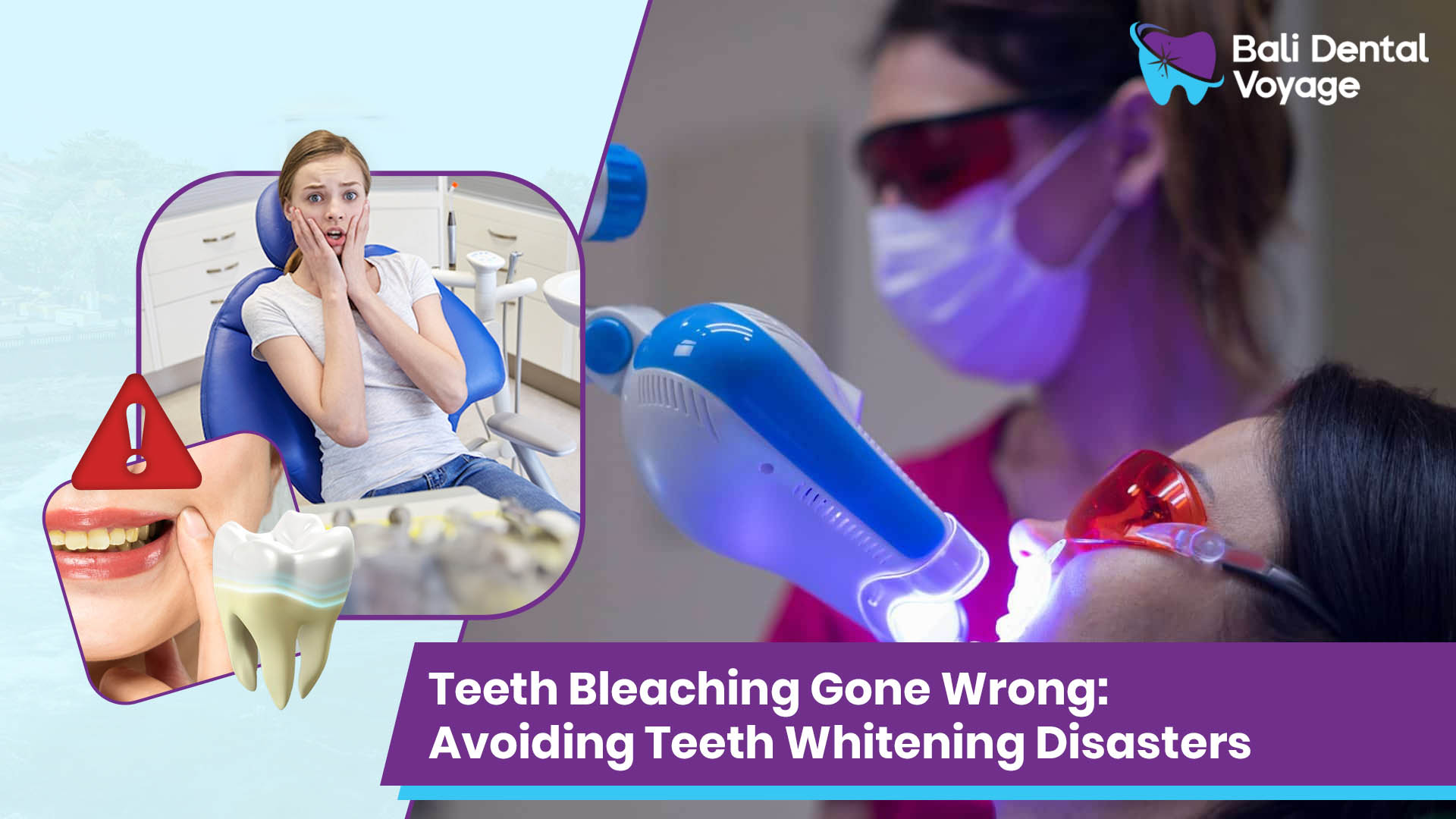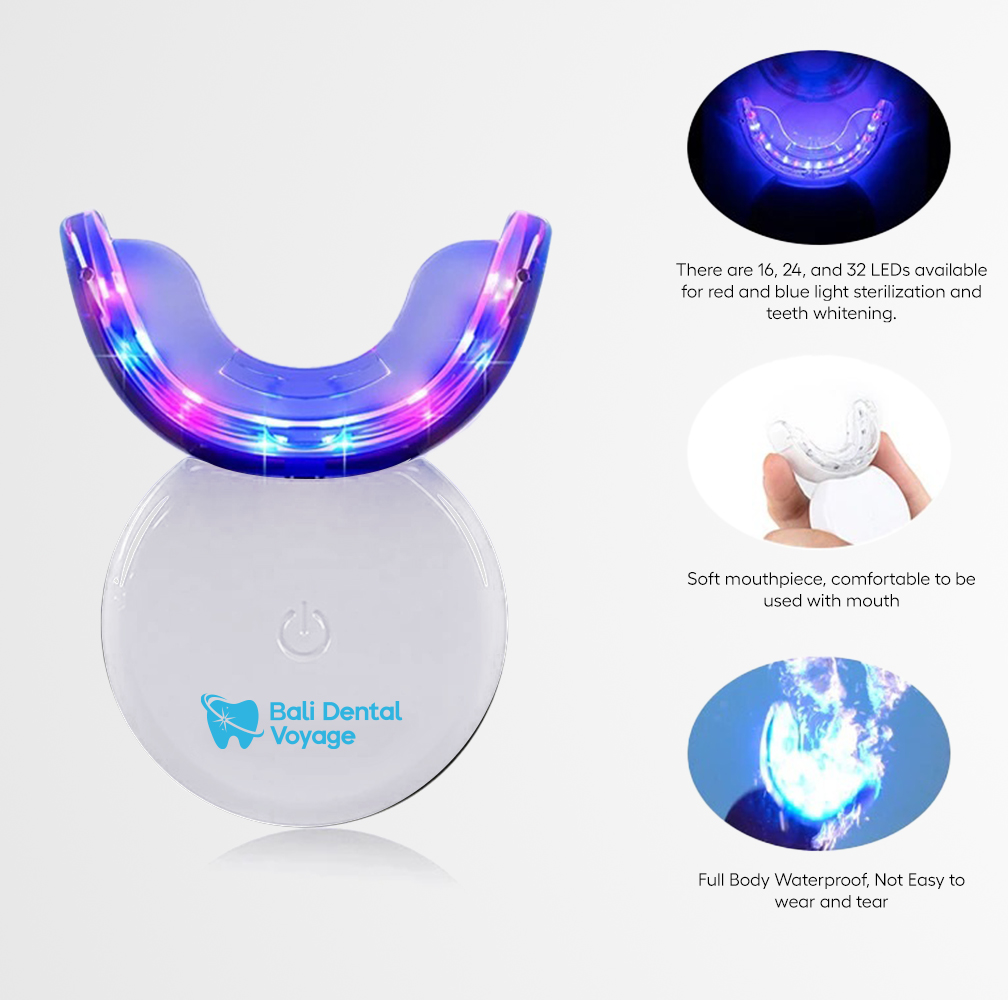
In recent years, teeth whitening procedures have gained immense popularity as people strive to achieve a brighter and more confident smile. While teeth bleaching can be an effective way to enhance the appearance of your teeth, it is essential to understand the potential risks involved, especially considering instances where teeth bleaching gone wrong. In this blog post, we will explore the common reasons why teeth whitening can go wrong and provide valuable tips on how to ensure safe and effective results.
Table of contents:
Teeth Whitening Risks

Teeth whitening is a popular cosmetic procedure that aims to remove stains and discolouration from teeth, helping to enhance their appearance. While it is generally considered safe, there are some teeth-whitening risks and considerations to be aware of including:
- Over-the-counter (OTC) teeth whitening products, such as whitening toothpaste and strips, may contain peroxide or other bleaching agents. These products are generally safe when used as directed, but they may cause teeth sensitivity and irritation of the gums.
It is important to carefully follow the instructions provided and discontinue use if any adverse reactions occur. - In-office teeth whitening treatments, performed by a dental professional, often involve the use of higher concentrations of hydrogen peroxide. Although these treatments can provide more immediate and long-lasting results, they may also increase the risk of teeth sensitivity and gum irritation.
Dentists take precautions to protect the gums and soft tissues during these procedures, but it is still possible to experience some temporary discomfort.
Individuals with dental restorations, such as crowns, bridges, or dentures, should consult with a dentist before undergoing teeth whitening. Whitening treatments may not affect the colour of these artificial materials, leading to uneven results.
Additionally, people with active cavities or ongoing dental work may need to postpone teeth whitening until these issues are addressed. It is important to note that teeth whitening treatments are not permanent.
The effects of whitening may fade over time, especially if habits like smoking or consuming staining foods and beverages are continued. Regular touch-ups or maintenance treatments may be necessary to maintain the desired level of whiteness.
To minimise risks and ensure the best outcome, it is recommended to consult with a dentist before starting any teeth whitening regimen. They can assess the individual’s oral health, determine the most suitable whitening method, and guide appropriate use and aftercare.
Overall, with proper precautions and supervision, teeth whitening can be a safe and effective way to enhance the appearance of your smile. However, it is essential to be aware of the potential risks and follow professional recommendations for the best results.
Can Teeth Whitening Go Wrong?
Teeth whitening can go wrong if proper precautions are not taken. Some common mistakes people make during the teeth bleaching process include:
- Using Over-the-Counter Whitening Products Without Professional Guidance
Over-the-counter whitening products may not be suitable for everyone, and using them without professional guidance can lead to ineffective results or unwanted side effects. - Using Unregulated or Uncertified Teeth Whitening Services
Opting for unregulated or uncertified teeth whitening services can be risky. These providers may use subpar products or employ improper techniques that can harm your teeth and gums. - Neglecting Pre-existing Dental Conditions
It is crucial to discuss any pre-existing dental conditions with your dentist before undergoing a teeth whitening procedure. Certain conditions, such as tooth decay or gum disease, may need to be addressed before whitening treatments can be safely performed.
Signs of Teeth Bleaching Gone Wrong
It is essential to be aware of the signs that indicate teeth bleaching has gone wrong. If you experience any of the following symptoms after a teeth whitening procedure, it is crucial to consult a dentist immediately:
- Tooth Sensitivity
Increased sensitivity to hot or cold temperatures is a common sign of teeth bleaching gone wrong. - Tissue and Gum Irritation
Redness, soreness, or irritation in the gum tissue can occur if the whitening gel comes into contact with sensitive areas. - Discolouration of the Edges of Teeth
Uneven whitening results can lead to dark or discoloured edges around the teeth. - Damage to Tooth Enamel
Weakened tooth enamel may manifest as increased susceptibility to cavities, decay, or chipping. - Inflammation and Redness of Gum Tissue
Aggressive whitening procedures can cause inflammation and redness in the gum tissue.
Ensuring Safe and Effective Teeth Whitening
To avoid potential Bali teeth whitening disasters, follow these guidelines:
- Choose a Qualified and Experienced Dentist or Dental Clinic
Select a reputable dentist or dental clinic with experience in performing Bali teeth whitening procedures. Look for certifications and positive reviews from previous patients. - Ask the Right Questions
Before undergoing any Bali teeth whitening procedure, ask your dentist about the treatment process, expected results, and potential risks or side effects. - Discuss Pre-existing Dental Conditions
Inform your dentist about any pre-existing dental conditions or concerns you may have to ensure that teeth whitening is safe for you.
If you are seeking safe and effective teeth whitening in Bali, look no further than Bali Dental Voyage. Our team of qualified dental professionals is committed to providing exceptional care and delivering beautiful smiles. Contact our Bali dental clinic today to schedule a consultation and take the first step towards achieving your dream smile.




